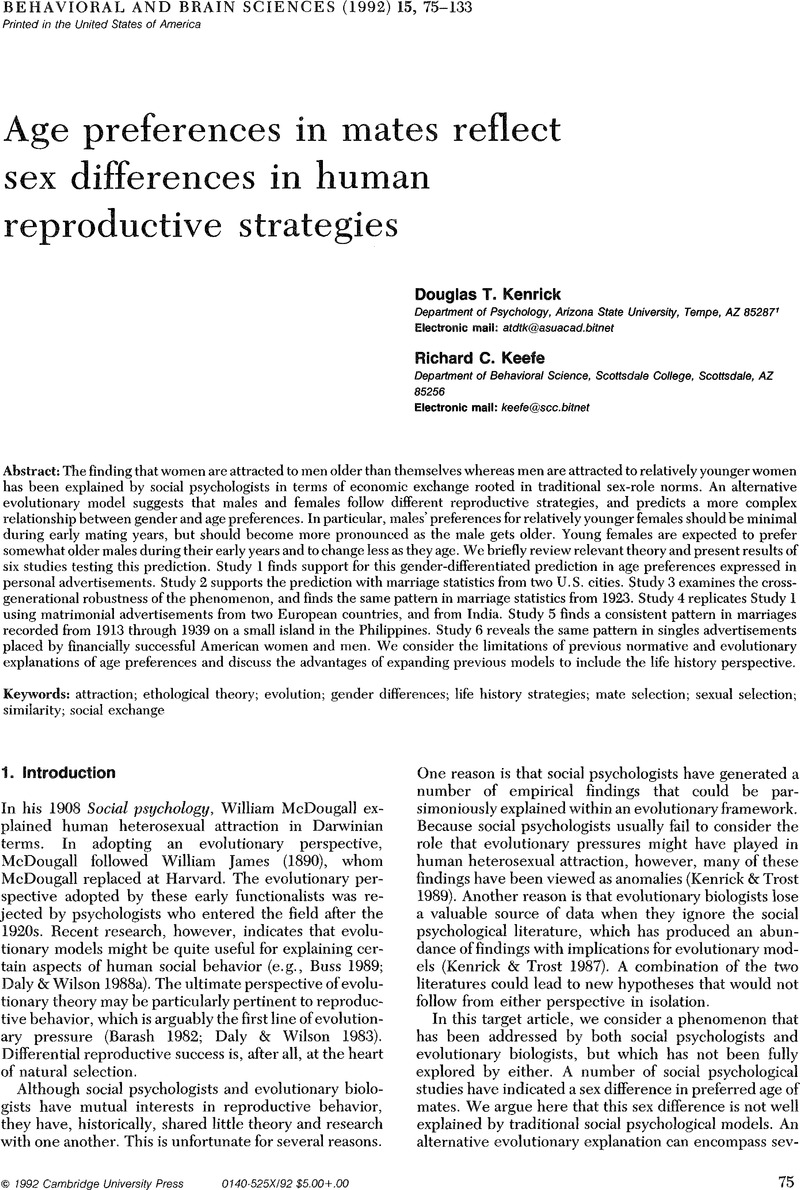Crossref Citations
This article has been cited by the following publications. This list is generated based on data provided by Crossref.
Kenrick, Douglas T.
1993.
Foundations of Personality.
p.
197.
Wiederman, Michael W.
1993.
Evolved gender differences in mate preferences: Evidence from personal advertisements.
Ethology and Sociobiology,
Vol. 14,
Issue. 5,
p.
331.
Kenrick, Douglas T.
1994.
Advances in Experimental Social Psychology Volume 26.
Vol. 26,
Issue. ,
p.
75.
Kenrick, Douglas T.
Keefe, Richard C.
Gabrielidis, Cristina
and
Cornelius, Jeffrey S.
1996.
Adolescents' Age Preferences for Dating Partners: Support for an Evolutionary Model of Life-History Strategies.
Child Development,
Vol. 67,
Issue. 4,
p.
1499.
Gómez-Jacinto, Luis
and
Hombrados-Mendieta, Ma Isabel
2011.
Análisis evolutivo de la diferencia de edad en la elección de pareja de los matrimonios celebrados en España durante el período 1976–2006.
International Journal of Social Psychology: Revista de Psicología Social,
Vol. 26,
Issue. 1,
p.
73.



